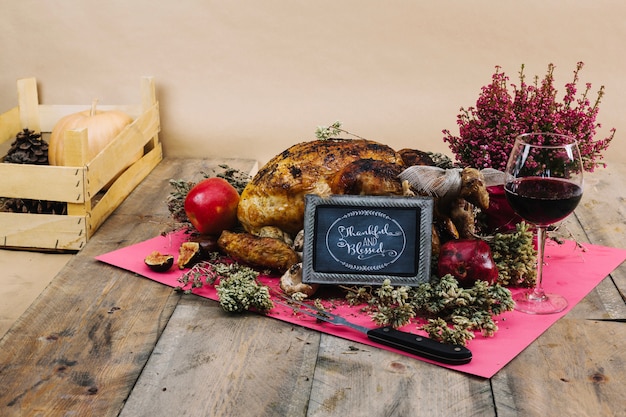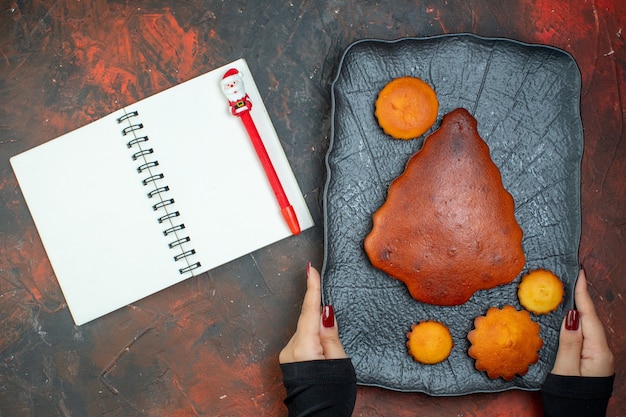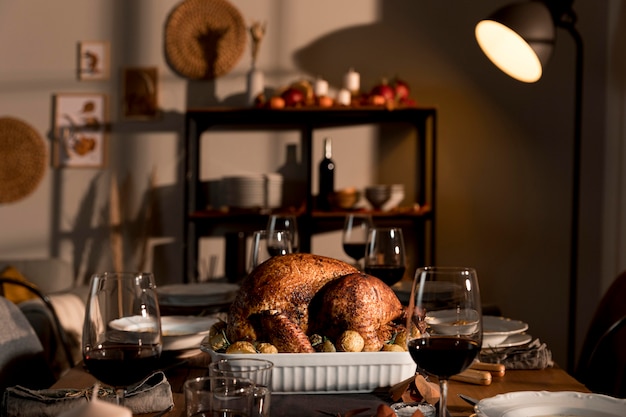The festive season is upon us, and with it comes the grand tradition of roasting a turkey. This year, you've got a real whopper on your hands: a 24lb turkey! Now, I know what you're thinking: "How on earth am I going to cook this behemoth?" Trust me, I've been there. My first encounter with a turkey of this size felt like trying to roast a miniature dinosaur! But fear not, my culinary comrades, because after years of trial and error, I've learned a thing or two about mastering the art of roasting a giant turkey. I'm here to share my knowledge and a foolproof roasting guide that'll have you serving up a delicious, perfectly cooked turkey, even if you're a first-time roaster.
Part 1: The Big Bird

A Bird of This Size?
Let's get real, a 24lb turkey is no small feat. It's a beast! It's the kind of bird that requires a good old-fashioned "heave-ho" to get it onto the counter. But, it also means you've got enough turkey to feed a small village, and that's pretty impressive. The good news is, even with a turkey this size, the principles of roasting remain the same. We just need to adjust the timings a bit.
Part 2: Getting Started

Thawing Time: The Crucial First Step
First things first, if your turkey is frozen, you need to thaw it. And I mean properly thaw it. Don't even think about shoving a frozen turkey straight into the oven. It's a recipe for disaster! A 24lb turkey can take a good 3-4 days to thaw properly in the fridge. It's all about patience, my friend. Remember, a safe and thoroughly thawed turkey is a delicious turkey. If you’re in a time crunch, you could try a cold water bath, but remember to change the water every 30 minutes. It's a bit of a commitment, but it'll do the trick.
Prepping the Bird: A Little TLC for Your Turkey
Once your turkey is thawed and ready to go, it's time to give it a good scrub. Wash it inside and out, making sure to rinse away any loose bits. You can even stuff the cavity with a few lemons and herbs for added flavour. I love to use a combination of lemon, rosemary, and thyme – it gives the turkey a wonderful citrusy aroma and adds a touch of sophistication. Don't forget to pat the bird dry with kitchen paper. This helps to create a crispy skin, which is a must-have for any good roast turkey.
Part 3: The Roast

Choosing Your Oven: The Fan vs. The Conventional
For a turkey this size, a fan oven is your best bet. It'll cook the bird more evenly, which is crucial when you're dealing with a large bird. The fan helps to circulate hot air around the turkey, ensuring that every part of it cooks to perfection. If you’ve only got a conventional oven, don't worry. Just make sure you position the turkey on a rack in a roasting tin. This will allow hot air to circulate around it, preventing it from steaming in its own juices. Nobody wants a soggy turkey, right?
Temperature and Time: The Golden Rules of Roasting
Now, for the crucial bit – the temperature and the cooking time. A 24lb turkey should be roasted at 350°F (175°C) for around 3-4 hours. But, here's the catch – it's not just about the time. The most reliable way to tell if your turkey is cooked is with a meat thermometer. You want the thickest part of the thigh to register 165°F (74°C).
Part 4: The Turkey Cooking Time Chart: Your Guide to Success
Here's where my trusty turkey cooking time chart comes in handy. This is what I've used for years, and it's never let me down. It's based on the weight of the turkey, so you can adjust it for your specific bird. But remember, this is just a guide. You need to keep an eye on your turkey and use a meat thermometer to ensure it's cooked through.
Turkey Cooking Time Chart:
| turkey weight (lbs) | Cooking Time (Hours) |
|---|---|
| 10-12 | 2.5-3 |
| 12-14 | 3-3.5 |
| 14-16 | 3.5-4 |
| 16-18 | 4-4.5 |
| 18-20 | 4.5-5 |
| 20-22 | 5-5.5 |
| 22-24 | 5.5-6 |
I always err on the side of caution and give it an extra 15-20 minutes just to be safe. You don't want to risk serving undercooked turkey! After all, safety first, deliciousness second.
Part 5: roasting tips: Pro Secrets for a Perfect Bird
Basting and Resting: Two Key Elements for Juiciness
One of the secrets to a juicy turkey is basting. Every 30 minutes or so, use the pan juices to baste the bird. This helps to keep the meat moist and prevents it from drying out. You can use a spoon or a basting brush to gently drizzle the juices over the turkey. Don't forget to rest the turkey for at least 30 minutes after you remove it from the oven. This allows the juices to redistribute, making for a succulent and flavorful bird. You can even cover it with foil to help it stay warm while it rests. The longer you let it rest, the better, so don’t rush the process!
Stuffing it Up: A Debate Worth Having
Now, this is a topic that's often debated: stuffing the turkey or stuffing it separately. I used to be a stuffing-in-the-turkey person. But, after some near-misses with undercooked stuffing, I've come around to the side of stuffing it separately. It cooks more evenly and allows you to add more flavour to your stuffing. I prefer to use a casserole dish for my stuffing and pop it in the oven alongside the turkey. That way, it cooks at the same temperature and gets a nice golden brown crust.
Part 6: The Sides: Completing the Festive Feast
A roast turkey deserves a proper spread of sides. Think roast potatoes, gravy, cranberry sauce, and maybe some seasonal veggies like Brussels sprouts or parsnips. I always like to include a medley of roasted root vegetables, like carrots, parsnips, and potatoes, for a touch of autumnal colour and flavour. You can even whip up a delicious stuffing to go with it. I love to experiment with different flavours and combinations. This year, I'm planning on making a sage and onion stuffing with some roasted chestnuts. It's a classic combination that always goes down well. And, of course, no festive feast is complete without a generous helping of Yorkshire pudding.
Part 7: Carving Time: A Skill That Takes Practice
This is where things can get a bit tricky with a 24lb turkey. You're going to need a sharp knife and a steady hand. Start by carving the breast meat off the bone. You can then slice it into thin slices. Then, work your way to the legs and thighs. If you’re feeling confident, you can even try removing the wings. But if you’re not sure, just leave them on and carve them at the table. Don't forget to save the bones for making a delicious turkey stock!
Part 8: The Leftovers: Turning Leftovers into Culinary Gold
Ah, the leftovers! The best part, in my opinion. Don't throw away those bones! They're perfect for making a hearty turkey stock. You can use the meat for sandwiches, salads, or even a delicious turkey pie. And who can resist a turkey sandwich with a dollop of cranberry sauce and a crispy lettuce leaf?
Part 9: FAQs: Answering Your Turkey-Related Questions
1. What if my turkey isn't fully cooked?
If you find that your turkey is still a bit pink, don't panic. Just pop it back in the oven for another 15-20 minutes until it reaches the desired temperature. However, if it's still pink after that, it's best to throw it away and not risk food poisoning.
2. Can I cook a turkey in a slow cooker?
Yes, you can cook a turkey in a slow cooker, but it’s not ideal for a 24lb bird. Slow cookers are generally designed for smaller cuts of meat, and a turkey this size may not fit properly. You can, however, use a slow cooker for the turkey breasts or wings.
3. How long can I keep turkey leftovers in the fridge?
You should store turkey leftovers in the fridge for no more than 3 days. If you're planning to keep them for longer, consider freezing them. Remember to defrost the turkey completely before reheating it.
4. Can I freeze a cooked turkey?
Yes, you can freeze a cooked turkey. Just make sure to wrap it tightly in plastic wrap or foil before storing it in the freezer. You can freeze it for up to 2-3 months.
5. How can I prevent my turkey from drying out?
To prevent your turkey from drying out, make sure you baste it regularly throughout the cooking process. You can also try covering it with foil for the first part of the cooking time to prevent it from browning too quickly. Another trick is to rub the turkey with butter or olive oil before roasting. This helps to create a nice, crispy skin and keeps the meat moist.
Everyone is watching

How to Cook Frozen Lobster Tails Perfectly: A Step-by-Step Guide
RecipesLobster. Just the word conjures up images of lavish meals, special occasions, and a taste of luxury. But let's...

Pigs in a Blanket Cooking Time: How Long to Bake for Perfect Results
RecipesAh, pigs in a blanket. Just the name conjures up images of those delightful little parcels of crispy pastry en...

Pork Fillet Cooking Time: How Long to Cook It Perfectly
RecipesPork fillet, or tenderloin as it's sometimes called, is a real favourite in our house. It's so versatile, and...

The Ultimate Guide to Cooking Delicious Frankfurters
RecipesLet's face it, we all love a good frankfurter. It's a classic, simple, and always satisfying. But let's be rea...

Wolf Meat Recipes: A Guide to Cooking Wild Game
RecipesLet's be honest, you don't see wolf meat at your local butcher shop every day. It's a bit of a wild card, but ...
